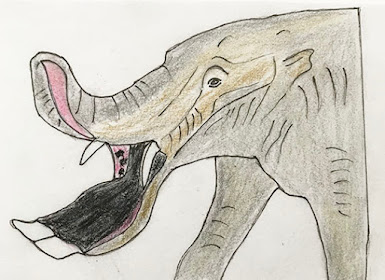AMBELODONTIDAE: "SHOVEL" TUSKERS
The ambelodontids are an extinct family of proboscideans. Early workers classified them as gomphopheres (see my previous post) because they look similar in body shape and size and have tusks. The lower tusks of ambelodontids however are strikingly different. The lower tusks of ambelodontids are flattened and closely spaced (nearly fused in some species), thereby forming an effective spatulate “shovel” for putting vegetation in their mouths.
About eight genera of ambelodontids are known. Most are only Miocene in age. At least three are endemic to North America (e.g., Ambelodon, Eurybelodon, and Konobelodon). Two other genera, Archaeobelodon and Platybelodon are found in North Africa and Europe, and Aphanobelodon is found in China.
Head view of Platybelodon of middle Miocene age (approximately 15 million years old) of Mongolia (my sketch is modified from a figure from Savage and Long (1986: p. 152), who mistakenly referred to it as a mastodon.

No comments:
Post a Comment